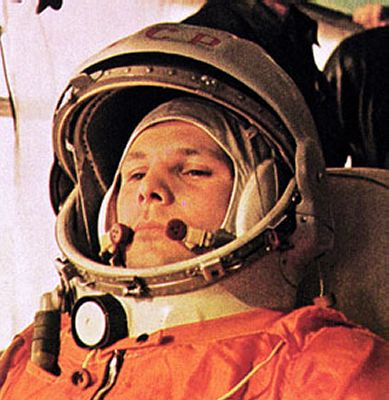
While both the Soviet Union and the United States launched a series of artificial satellites, the major goal quickly became “putting a man in space.” This objective was less scientific than psychological and political. The Soviet communists were determined to demonstrate the superiority of their technology generally and, in particular, the might of their ballistic missiles. At the time, their rockets were more powerful than what the United States had. The Soviets were eager to demonstrate that they were capable of lofting a person (and all of the machinery necessary to support a person) into space—or a warhead onto an American city.
Just as the Soviets had been first into orbit with Sputnik, so, on April 12, 1961, they were first to put a person, Yuri Alekseyevich Gagarin, into space—and into Earth orbit, no less. The first woman, Valentina Tereshkova of the USSR followed in 1963. It took America 20 more years to achieve this landmark. Through the rest of the 1960s, the Soviets and the Americans sent cosmonauts and astronauts into orbit and even had them practice working outside of their spacecraft in what were termed “extravehicular activities” or, more familiarly, space walks.

No comments:
Post a Comment